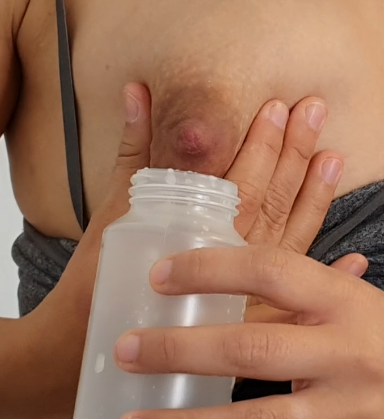
Obtaining a breast milk sample for lab testing
When mastitis is suspected, sometimes a breast milk sample for lab testing is one of the diagnostic strategies that can be used in order to approach the most suitable treatment.
In order to do this, the breast milk culture sample must be collected in an optimal way, so that the result is as reliable as possible.
Recommendations for sample collection
The recommendations for obtaining the breast milk sample are as follows:
- It is recommended, whenever possible, that samples be collected before initiating microbial treatment. If not, a false negative in the subsequent result could be a consideration.
- It is recommended that the milk culture sample is done from both breasts, even if the symptoms are more intense in one breast than in the other.
- Milk expression must be done manually to avoid contamination with other equipment. For this reason, using an electric or manual breast pump to collect the sample is strongly discouraged.
- Ideally, the sample should be collected 2 hours after the previous feed at the breast.
- Avoid the application of ointments or topical creams in the feeds before sample collection, and avoid placing accessories such as breast milk collectors or shells on the breasts in the hours before the extraction. If these have been used, the nipple and areola should be washed with warm water and neutral soap and dried with a single-use towel immediately before sample collection.
- Sometimes, discarding the first 3-4 drops of breast milk is recommended. However, it is necessary to evaluate if more milk can be obtained easily because mastitis may make it difficult or painful for the mother to express the milk.
- The recipient to be used should be made of sterile plastic, have a wide opening, and have the possibility to be closed without leaking. For each breast, one recipient must be used, and it must be clearly labeled.
- The volume required for a sample test of breast milk is 1 mL.
Manual extraction
Manual milk expression can be a challenge when there is mastitis. To optimize expression, the following steps are recommended:
Stimulation
- Massage the breast with circular movements with the fingers at the same point, without sliding over the skin, while pressing the breast towards the ribs. Repeat for a few seconds all over the breast.
- Rub without pressing (as if stroking) from the top towards the nipple. This movement will favor and stimulate the milk ejection reflex.
- Shake the breast while leaning forward.
Extraction
- Place the thumb and forefinger about 3-4 cm behind the nipple (this does not necessarily have to be at the end of the areola), making a “C” shape with the hand. The patient should feel that she is holding the breast with her hand..
- Push the breast with the fingers backward, towards the ribs. Do not spread the fingers apart or move them over the skin; keep the C-shape with the hand.
- Compress the thumb and forefinger together towards the nipple without sliding them over the skin. At this point, the first drops of milk should appear on the nipple.
There is a video explaining manual breast milk extraction available at this link.
Transport
Samples should be transported to the lab as soon as possible. If this cannot be done within the first two hours after extraction, they can be stored in a fridge for up to 24 hours.
References
Delgado S, García-Garrote F, Padilla B, Rodríguez Gómez JM, Romero B. Microbiological diagnosis of bacterial infection associated with childbirth and puerperium. 54. Padilla B (coordinator). Procedures in Clinical Microbiology. Cercenado Mansilla E, Cantón Moreno R (editors). Spanish Society of Infectious Diseases and Clinical Microbiology (SEIMC). 2015.